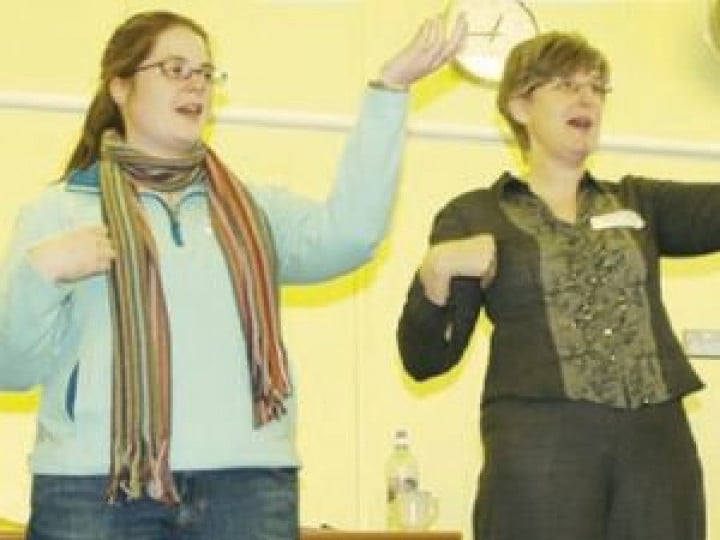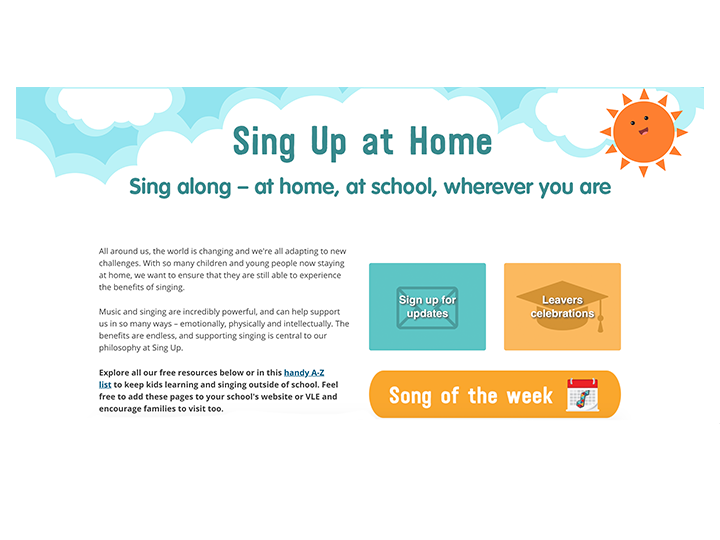
Sustainability is a key word these days. There’s no doubt that the degree to which Sing Up can help encourage a long-term legacy of singing, depends on getting teachers and leaders who don’t work with singing to get started – and to continue. It’s about making singing central to everything they do with children. We need to preach to the unconverted now, so that all colleagues can use singing as a permanent part of their work. It’s going to take more than one Singing Champion per school; we need to engage all teachers and leaders, across the staffroom and beyond, and support their transformation into confident leaders who are willing and able to lead singing activities with ease, joy and regularity. But how do we get started? Here’s where you come in.
Be supportive
Helping someone find their way as a singing leader is not always easy. There isn’t necessarily one approach to suit all people or situations; there are many reasons why people are reluctant to sing, let alone teach singing; teachers are busy and some still sadly believe that singing isn’t that important. What these people need is TLC – a Teachers and Leaders Choir. If you can set up and lead a short skills-sharing session, which ideally becomes a regular feature of staffroom life, open to all from the truly terrified to the coolly confident, the benefits across the school, even after half a term, will be clear.
This needn’t be a performing group (although these groups often do end up taking to the stage), and it’s not about piling more pressure onto teachers. It’s a great way to have fun, build a happy staff team and discover your singing voices!
Starting a staff choir: four helpful hints
1. Acknowledge the fear
Singing in front of people can be scary. These teachers’ comments stem from fear: ‘I can’t sing’, ‘I don’t want the children to see me struggling; it may damage their confidence in me’, ‘I don’t mind singing in front of the children but as soon as an adult walks in I clam up!’.
The fact is that when we open our mouths to speak or sing, and our own unique sound comes out, we are revealed: you can tell a lot about ‘where a person is at’ by the tone, quality, pitch and use of their voice. Subconsciously we know this, and the fear of being ‘found out’ in some way is a real one. Add to this the experience of having been told at some point that you can’t sing, and it’s no wonder people can’t find the time to break through the barriers to… just sing.
2. Bridge the gap
Argue with your colleagues that yes, it can be scary, but argue that if we approach the voice in terms of sound, exploring all kinds of vocal noises in warm-ups, the gap between confident speaking (which teachers already have) and confident singing is reduced, and initial fears are replaced by a spirit of adventurous enquiry. We ask our colleagues, who in turn ask their pupils, to explore the sounds we can make. And from there, we approach the singing voice.
3. Point out the links
Singing helps children learn and remember, and can illuminate the curriculum. Point out to reluctant colleagues that far from becoming a chore, singing can bring new life to aspects of children’s learning.
4. Offer a taster
With your Headteacher’s support, set up a 15-minute session, so you can:
- offer reassuring, practical steps to show that singing isn’t so scary after all.
- get your colleagues singing – you can talk about it ’til the cows come home but nothing beats the uplifting experience of singing in a group.
- offer to facilitate a regular TLC session, promising it will only take 12 minutes a week. Agree on a break or lunchtime or after-school slot for this to take place. If you are skilful with time you really can lead an effective and energised session in just 12 minutes. This would break down as:
- 2 mins: people arrive, chat, ‘get here’
- 1 min: focused breathing and relaxation
- 3 mins: group warm-up, eg. simple call-and-response, first rhythmic, then vocal
- 6 mins: learning, singing, or revising a song.
You are aiming to show what fun singing is, and how useful it can be. Who could resist?
Singing leaders are as diverse as the songs they teach. You don’t have to be an excellent singer to be an excellent singing leader. Your school and your colleagues need you, and will benefit hugely from much-needed TLC. Start today, and good luck!
Em Whitfield-Brooks



